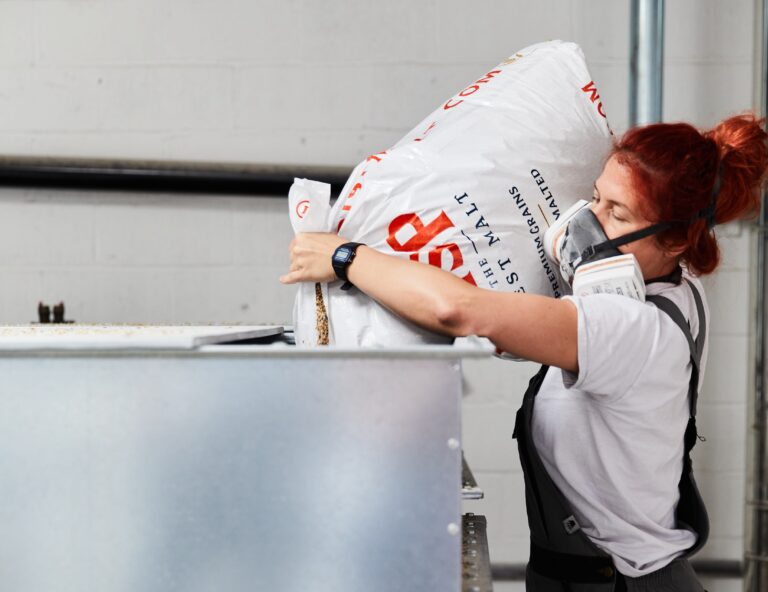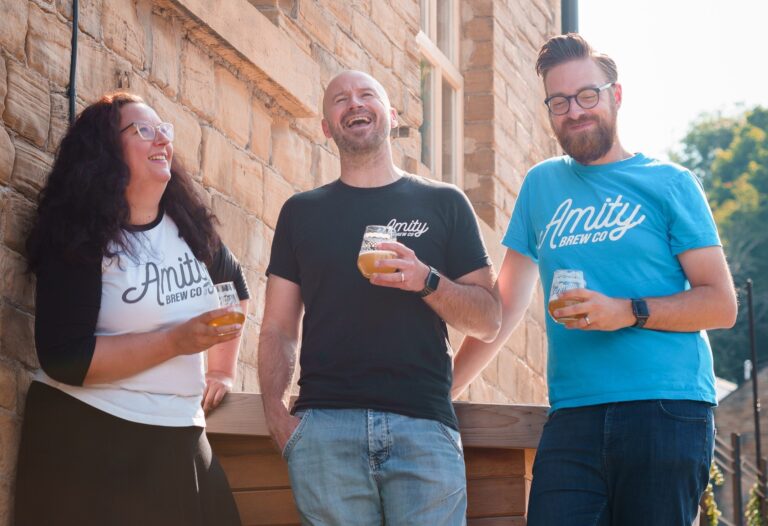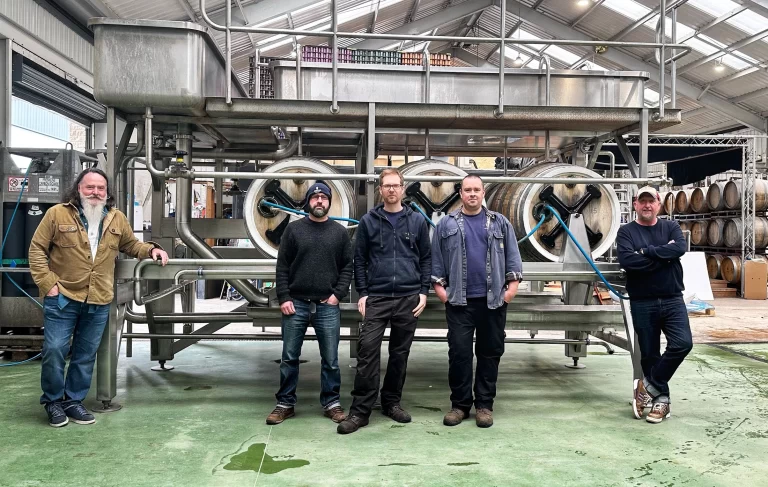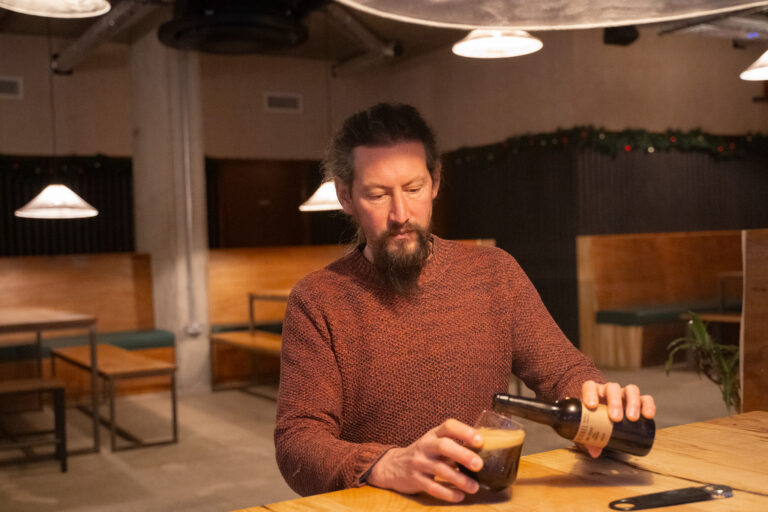Saccharomyces yeast strains are the most widespread in use, selected strains have been improved over many generations to optimise favourable chemical and sensory qualities as well as to maintain reproducibility which has led to numerous ‘go to’ strains being available for any number of different beers.
Typically non-Saccharomyces strains are seen as spoilage organisms however a few have been noted for their usefulness in some beer styles often as part of mixed specialist strains.
These strains are commonly used as co-fermenters with a Saccharomyces yeast. This is due, in part at least, to non-Saccharomyces strains producing insufficient levels of ethanol, as well as their propensity to produce off-flavours when not tightly controlled.
Wine makers have for some time been trialling the use of novel yeast cultures in combination with more standard strains to improve flavour profiles, product quality and longevity. Tristezza et al (2012) utilised Hanseniaspor auvarum along with Saccharomyces cerevisiae to produce a wine with a more pronounced spicy flavour profile, while Ciani et al (2016) focussed on the use of non-conventional yeast species to lower the ethanol content of selected wines.
In this article we will review some of the latest research into the use of new and novel yeast strains and there possible use in the craft brewing industry.
Brettanomyces spp.
In the early 1970s, almost all known species of Brettanomyces had been isolated from spontaneous brewing processes. Today Brettanomyces is the most widely used non-conventional yeast strain in the craft brewing market, although predominately used in Lambic ales, Brettanomyces strains are being utilised in an ever growing number of beer styles.
It is now known that these yeasts are responsible for producing a set of unique flavour compounds which together result in the typical commercial Brettanomyces character i.e. complex fruity and floral notes. The use of commercial strains have helped limit the propensity of Brettanomyces to produce some of its more unpleasant off-flavours.
Lachancea thermotolerans
A recently isolated and propagated strain, L. thermotolerans, is being investigated at North Carolina State University for its application as a single-strain brewing yeast. This strain has proven to be a viable single strain brewing yeast in laboratory and pilot-scale fermentations; it has fermented the principal wort sugars (i.e., maltose and maltotriose) and produced as its main by-products CO2 and ethanol. In a trials fermentations using a lambic-style wort, L. thermotolerans was able to produce 6.8% ABV and reduce the pH to 3.60.
Torulaspora delbrueckii
T. delbrueckii is a species with a long fermentation history and is used widely in commercial wine production due to its ability to produce complex fruity flavours while coping with ABV’s up to 11%. However T. delbrueckii is also recognised as one of a series of yeasts responsible for the fermentation of Baverian Wheat beers.
Typically T. delbrueckii requires an oxygen rich environment but will tolerate high osmotic conditions and very low temperatures. Ethanol tolerance depends heavily on the strain, however levels up to 11% are not unknown in wine and recent evidence has shown that many strains cope well with 5% in beer. Importantly T. delbrueckii is also tolerant of high IBU beers, this is again strain dependant but these characteristics place T. delbrueckii well within the scope of routine use.
This yeast’s most promising attributes are its ability to produce flavours/aromas such as sweet floral, honey, fruity, rose petals and brandy.
Canonica (2016) recently published work showing that the use of T. delbrueckii in a co-culture increased levels of phenyl ethyl acetate, ethyl hexanoate and ethyl octanoate to produce a beer with a complex fruity, floral and aniseed character.
Wickerhamomyces anomalus
W. anomalus (Pichia anomala) is capable of growing in a wide range of environmental conditions including limited oxygen, low temperatures and low pH.
However W. anomalus produces only low levels of ethanol, making it a possible candidate a sole fermenter in low alcohol beers, or as a co-fermenter in standard fermentations.
W. anomalus producers several interesting flavour compounds that produce complex fruity beers and the use of this strain has been proposed in sequential or co-inoculated beers.
Genetically Modified Yeast
Brewers have access to a huge range of potential brewing yeasts either from private, commercial and national collections, however there are huge similarities in many, and without genetic testing some strains could in fact the from the same source. However there are other possibilities becoming available via research and development organisations albeit slowly; the use of genetically modified organisms (GMOs).
Straight away a few will baulk at even at the mention of GMO’s, so let me quickly say that there are 2 very basic types of GMO, one is ‘natural’, i.e. although it is produced in a lab it could also occur in nature, in this case all the lab does is create the right optimised conditions and then nature takes over. Once the yeast have ‘mated’ the lab merely tests the resulting yeasts and selects the ones it prefers. In this case nature selects what attributes are passed on to any daughter cells.
The other type is when selected genes are added or removed, sometimes from non-related species e.g. jellyfish genes into yeast. This is, as you can imagine not going to occur naturally.
Both approaches offer some fantastic opportunities; using the gene manipulation technique you could add an aroma gene from a selected hop variety along with the gene for hop acids and let the yeast carry the load and cut costs, or you could add in genes that produce certain anti-oxidants so the finished beer could be one of your 5 a day, the list of potential benefits is almost endless, as is the potential downfalls. For instance some researches have looked at adding the genes that make morphine into yeast cells.
Although genetic modification of yeast might be unappealing to some, we have to remember that ‘natural’ genetically modified yeast strains have been used in brewing since the 1500’s when German brewers discovered that storing beer in caves (lagering), improved the beer taste.
In this case the brewers had unwittingly hybridised their traditional brewers yeast strain with a different strain, Saccharomyces eubayanus, which occurred naturally in the cold environment of the caves, this new strain is what we now call S. pastorianus, you may know it as Saccharomyces carlsbergensis. ‘Probably the most used lager strain in the world’.
In 2015, researchers at the University of Leuven, Belgium basically did the same thing again trying to create a whole new set of lager yeasts. A number of the new hybrid yeasts inherited beneficial properties from both parent strains and some of the resultant strains actually outperformed current yeasts during fermentation trials.
Professor Verstrepen who headed up the research said that of the 31 new strains that were tested only ten performed reasonably well in terms of speed of fermentation and flavour. When these 10 were tested in full-scale fermentations only two strains actually produced beer that was more flavoursome than traditional lager yeasts.
Although these yeast strains are not yet available commercially, the research having been financed by an industrial partner, the actual process for creating such strains isnt beyond any University with the appropriate skill set. You do need a little more than a barrel of beer and a cold cave though.
The first research on the genetic modification of brewing yeasts took place decades ago, during the resulting period innumerable GM yeasts must have been created, however as yet I don’t know of any commercial brewer that’s used a GM yeast and produced a beer available to buy.
This is because of the obvious ethical issues, more than a few legal hurdles and a lot of commercial reasons not to try, what brewery producing real ale/craft beer or any other wholesome naturally brewed product would want to be associated with using a GM yeast?
However back in the early 90’s one beer was made with a genetically modified yeast. The beer was brewed at the Brewing Research Foundation International as a test case in the use of GM yeasts, it was and I believe is, the only beer made with GM yeast to gain approval to be sold commercially… Nutfield Lyte Lager.
BioHackers
As technology becomes cheaper and the power of the internet help spread ideas and knowledge quicker than ever before, the methods behind adding new genes into brewers yeast to produce different flavours, scents, nutrients and possibly bioluminescent properties (easier to find your pint in a darkened room and also V cool) is becoming more and more accessible, if you know where to look, or you know some pretty clever and resourceful people.
In 2015 a BioHacker group in London were looking at designing novel strains of brewers yeast as part of a competition overseen by the international Genetically Engineered Machine (iGEM) Foundation.
They looked at 5 different options that included flavour and nutritional enhancements to brewers yeast, one was the addition of the miraculin gene from the Miracle Berry plant Synsepalum dulcificum. Miraculin makes sour foods taste sweeter. While another strain was to have the lycopene gene added (found in tomatoes), this should produce a red beer with the added benefit of containing a well known anti-cancer compound, another was to have one of the flavour genes responsible for fruitiness over expressed, while another was having genes added that would produce all the essential amino acids in the perfect ratio required by humans…
Many brewers wouldn’t touch a GM yeast with a barge pole, however, others one day will, and as new consumers drive the market I am sure there will be a niche created. However right now there are lots non-GM, non-Saccharomyces yeast strains offering plenty of scope for innovation, the question is who will be the first to try. For those interested, the National Collection of Yeast Cultures is probably your best bet.
References:
Basso et al (2016) Could non-Saccharomyces yeasts contribute on innovative brewing fermentations?
Canonico, et al (2016) Torulaspora delbrueckii in the brewing process: A new approach to enhance bioflavour and to reduce ethanol content.
Ciani et al (2016) Non-conventional Yeast Species for Lowering Ethanol Content of Wines
https://www.newscientist.com/article/mg14820093-200-added-gene-brews-a-stronger-pint/
http://2015.igem.org/Team:London_Biohackspace/Design
http://www.nature.com/news/tapping-genetics-for-better-beer-1.20336
Michel et al (2016) Screening for new brewing yeasts in the non-Saccharomyces sector with Torulaspora delbrueckii as model.
Steensels et al (2015) Brettanomyces yeasts — From spoilage organisms to valuable contributors to industrial fermentations.
Tristezza et al (2016) The Oenological Potential of Hanseniaspora uvarum in Simultaneous and Sequential Co-fermentation with Saccharomyces cerevisiae for Industrial Wine Production.
Walker, G. (2011). Pichia anomala: Cell physiology and biotechnology relative to other yeasts.








